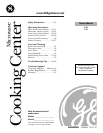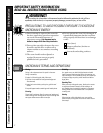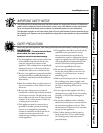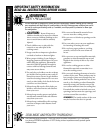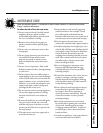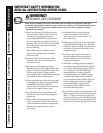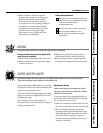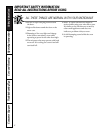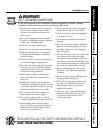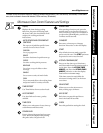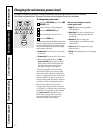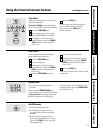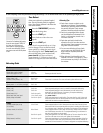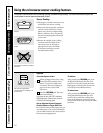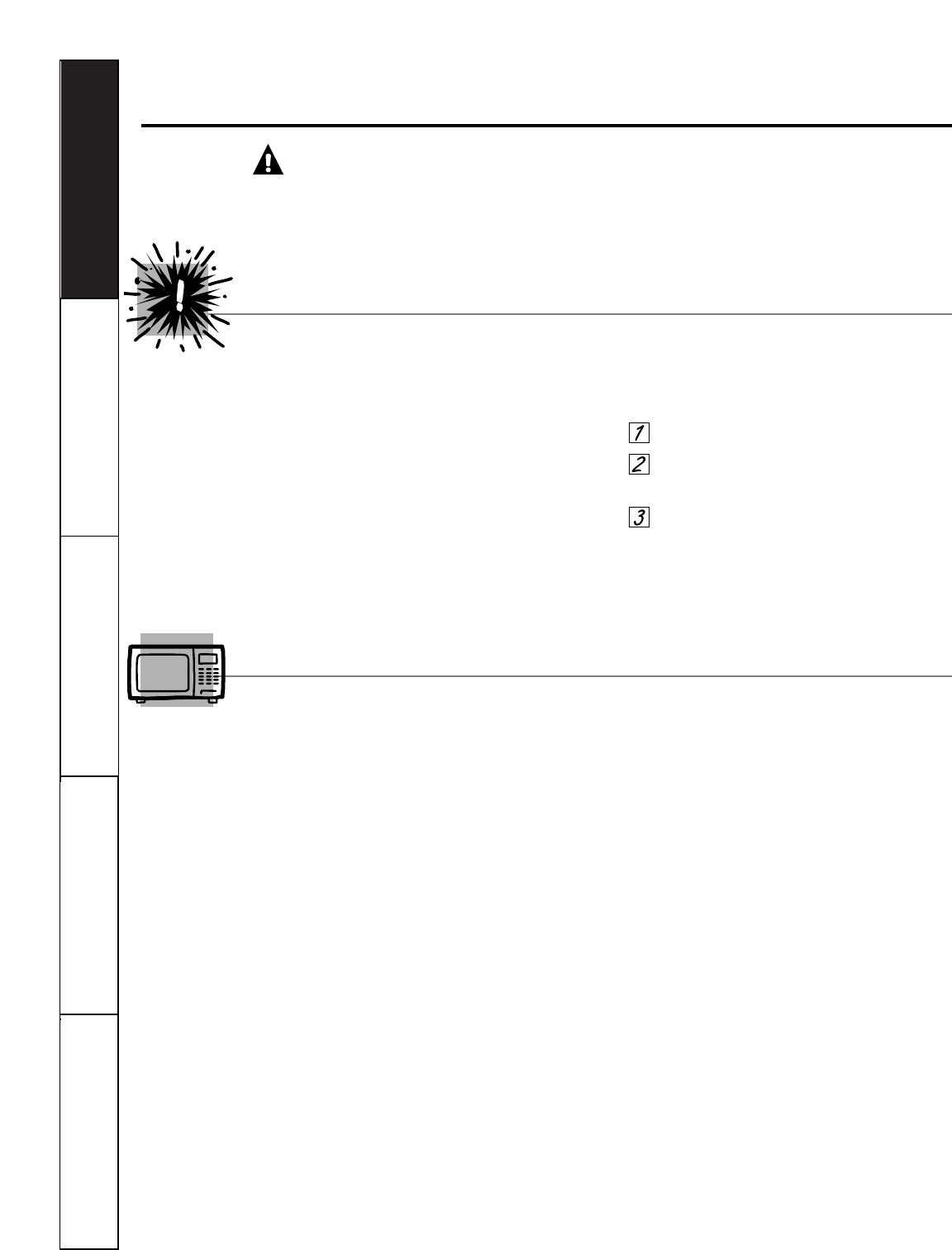
2
Safety InstructionsOperating InstructionsCare and CleaningTroubleshooting TipsConsumer Support
IMPORTANT SAFETY INFORMATION.
READ ALL INSTRUCTIONS BEFORE USING.
WARNING!
For your safety, the information in this manual must be followed to minimize the risk of fire or
explosion, electric shock, or to prevent property damage, personal injury, or loss of life.
PRECAUTIONS TO AVOID POSSIBLE EXPOSURE TO EXCESSIVE
MICROWAVE ENERGY
■ Do not attempt to operate this oven with
the door open since open-door operation
can result in harmful exposure to
microwave energy.
It is important not to
defeat or tamper with the safety interlocks.
■ Do not place any object between the oven
front face and the door or allow soil or
cleaner residue to accumulate on sealing
surfaces.
■ The oven should not be adjusted or
repaired by anyone except properly
qualified service personnel.
■ Do not operate the oven if it is damaged. It
is particularly important that the oven door
close properly and that there is no damage
to the:
■ door (bent)
■ hinges and latches (broken or
loosened)
■ door seals and sealing surfaces.
MICROWAVE TERMS AND DEFINITIONS
Arcing
Arcing is the microwave term for sparks in the oven.
Arcing is caused by:
■
metal or foil touching the side of the oven.
■
foil that is not molded to food (upturned edges act
like antennas).
■
metal such as twist-ties, poultry pins, gold-rimmed
dishes.
■
recycled paper towels containing small metal pieces.
Covering
Covers hold in moisture, allow for more even heating and
reduce cooking time. Venting plastic wrap or covering with
wax paper allows excess steam to escape.
Shielding
In a regular oven, you shield chicken breasts or baked
foods to prevent over-browning. When microwaving, you
use small strips of foil to shield thin parts, such as the tips
of wings and legs on poultry, which would cook before
larger parts.
Standing Time
When you cook with regular ovens, foods such as roasts
or cakes are allowed to stand to finish cooking or to
set. Standing time is especially important in microwave
cooking. Note that a microwaved cake is not placed on
a cooling rack.
Venting
After covering a dish with plastic wrap, you vent the
plastic wrap by turning back one corner so excess steam
can escape.



